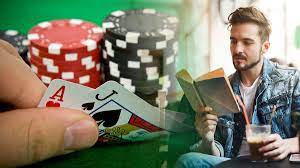For those who don’t know, here’s a brief rundown of blackjack. It is played with a single deck and is between 2 and 11 (ixed) dealt out. A deck of cards is shuffled by a dealer and then dealt out. The basic premise of the game is to get as close to 21 as possible without going over. There are various methods of determining 21, such as counting cards, using the table, or simply looking at the cards and adding the number of the cards to 21. Blackjack is also sometimes referred to as 21 because the idea is to get as close as possible to 21, whatever the value. Though the ranks of the cards don’t matter, much like in poker, many players find it advantageous to be dealt a 2, 3, 4, 5, or 10 card given the chance of increasing their hand total. At most, casinos will only print up to around 6 decks of cards for each hand.
Training programs for blackjack often assign different values to the various cards in a deck. Many see a 2 as having a lower value than a 7, others a 7 as more valuable than a 2. To a casino professional, it’s all a matter of chasing bets and luring players to the casino with the ease of identifying card values.
Blackjack is known to have been around since the 1700s. The game was played in French casinos, such as Casino de Monte Carlo, and in English pubs. The game is typically played at a table where there are six to eight players. A dealer is chosen and may be the dealer pressed into service for the entire group, or may simply deal one hand per player, in which case the dealer is responsible for calling the bet, as is common in casinos.
Casinos throughout North America, and even in other parts of the world, typically have a house dealer. The house dealer is responsible for Donovan’s marker and for collecting the bets, releasing the cards, and Organizing the shuffling of the cards. The house dealer chips are distributed with the dealer’s chair.
Casino personnel normally wear the uniforms that the casino designs itself, but these are not always a surefire way to tell if the table is on a hustle or not. PokerTAG says that “60% of the stakes come from 1st to 2nd change, the other 40% come from 3rd to 1st change, and the rest of the stakes come from 4th to 1st change.” Of the various house rules, the casinos are the ones that will typically draw your attention to particular rules about card values, but here it is worth mentioning that blackjack, a game that needs a better than average hand, is statistically more favorable to the player than any other. The reason for this is that the potential for loss is greater in blackjack than in any other poker game.
Another point worth mentioning is that in poker, in contrast to blackjack, a stronger hand probably wins, even if the opponent has a better hand, because in poker, there is no possibility of busting. If you have the best hand, you essentially have a guaranteed profit, whereas in blackjack, if your hand goes bust, you cannot change the negative expectation you have built up.
All the permutations of dealer luck, banker luck and player luck are inherently opposed to one another. You cannot use the dealer’s luck to your advantage, nor is it likely that you can use your own hand to your advantage. Setting out a table for your opponents to guess the cards and then dealing out more cards when you get a good hand is the basis of most bluffers, and what hackers do toapped up players. From the MIT cyber thriller Professor James Holt’s book “Playing Bookies” : “H Holt says the game begins with each player writing down the sum of money in the pot. You then take these figures and compounding, he says, bets a constant amount for all the players. With enough negative expectation against you, you will win, he says; but if you have a positive advantage you will always win.”
If a player believes that he or she is drawing closer to 21, or a high number, they should make a large bet, say 5 or 6 percent of the pot, and if the dealer has a low number, say 8 or 9, this bet will lower their expectation and the chances of busting are greatly reduced.
After I read this, I began to think about the things that I could bet to lower my house advantage to almost zero and I thought about the statistics. It seemed to be working, so I started to notice the next time I had a good run at a blackjack table, my losses seemed to be spikes due to the table being out of session.
